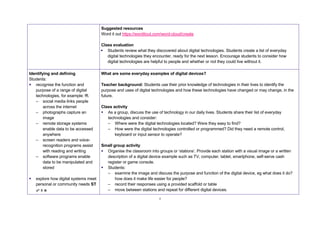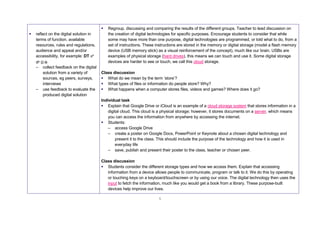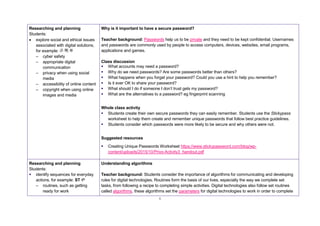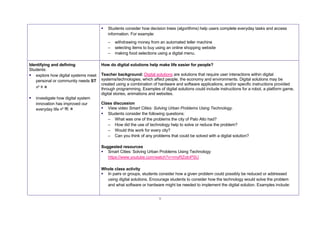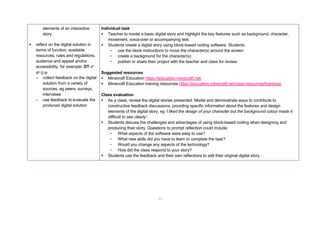The document provides an overview of a Digital Technologies unit that allows students to recognize how digital technologies are used in everyday life and to create digital stories using block-based programming. Key skills assessed include creating a digital story, composing flow charts, practicing safe online behaviors, and demonstrating computational thinking using algorithms. The unit covers identifying different digital technologies, understanding algorithms through everyday routines, creating secure passwords, and exploring social and ethical issues related to digital solutions. Sample lessons described include defining digital technologies, identifying the purpose of common devices, discussing cloud storage, and representing sequences of steps through flowcharts.



